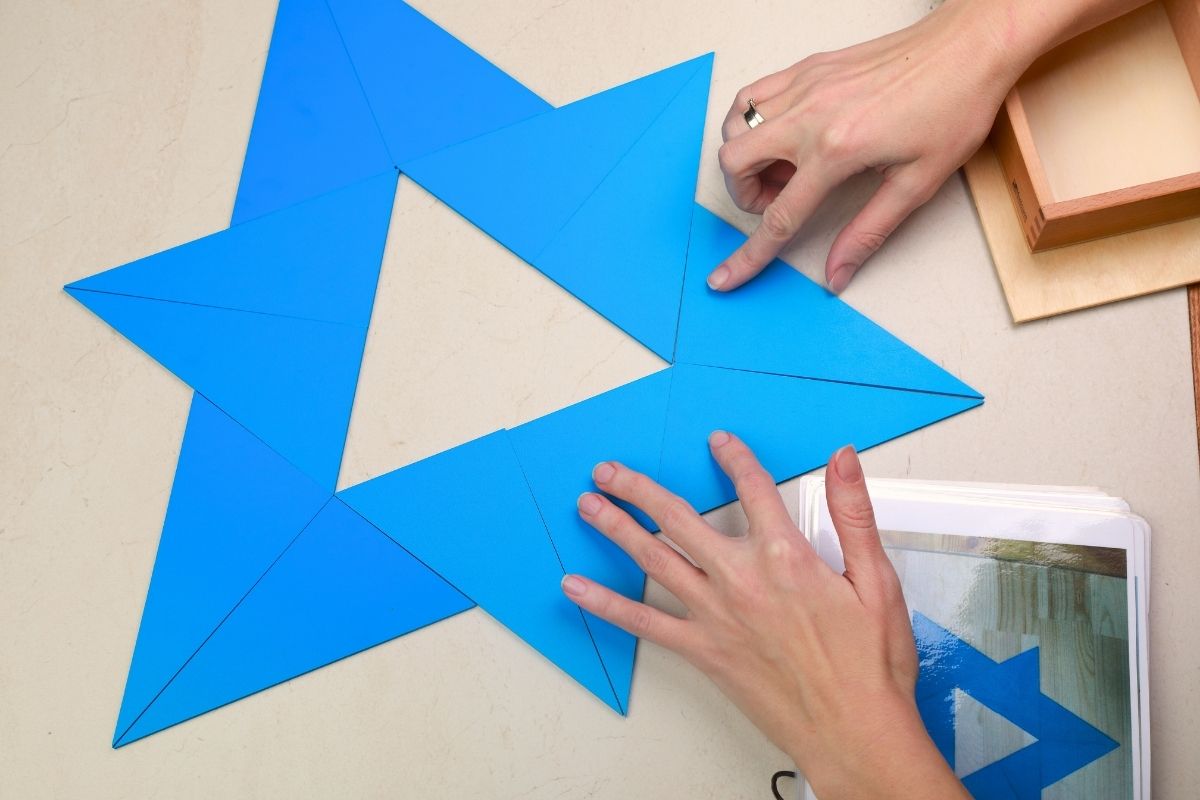In the captivating world of Montessori education, one teaching tool stands out for its remarkable ability to foster creativity, problem-solving skills, and a deep understanding of geometry: the constructive triangles. This powerful educational resource comprises sets of triangular shapes enclosed in wooden boxes, enabling children to experience practical knowledge through hands-on activities while developing their cognitive abilities. In this article, we shall delve into the various aspects that make these unique manipulatives an essential addition to any Montessori learning environment.
A Brief Overview of Constructive Triangles
The idea behind constructive triangles finds its roots in Dr. Maria Montessori’s groundbreaking approach toward child-centric education. As an eminent educationist, she strongly believed that children assimilate abstract concepts more readily when given appropriate materials which cater to their innate curiosity and need for exploration. Consulting her well-established principles, she developed a range of teaching aids, which have since been widely adopted in Montessori classrooms across the globe – with constructive triangles being no exception.
The Evolution of Constructive Triangles
From an early stage, Dr. Montessori observed how children naturally gravitated towards geometric shapes, taking a keen interest in arranging them to form intricate designs and patterns. Based on these observations, she devised a set comprising distinct triangular pieces that could be combined in numerous configurations to create various shapes such as rectangles, squares, rhombuses, trapezoids, as well as more complex polygons. Constructive triangles are typically classified according to their size and angles – which predominantly include equilateral, right-angled, and scalene versions – each offering unique avenues of discovery for young learners.
Nurturing Essential Skills with Constructive Triangles
The transformative potential of constructive triangles lies in their ability to stimulate children’s cognitive development through practical experience, thereby enabling them to absorb abstract principles with remarkable ease and enthusiasm. Here are some key skills that can be cultivated through exploring these versatile manipulatives:
- Conceptual Understanding of Geometry: As children interact with different types of triangles, they gain insight into significant aspects of geometry such as size, dimensions, angles, and symmetry. By examining how varying shapes interlock, learners form clear mental pictures of spatial relationships, paving the way for advanced geometrical thinking.
- Problem-Solving Abilities: Constructive triangles provide endless opportunities for young minds to engage in trial-and-error experimentation while attempting to create specific arrangements or cover designated areas. This promotes creative problem-solving as well as a solid grasp of various mathematical properties inherent in the process.
- Fine Motor Skills Development: Manipulating small triangular pieces necessitates precise hand-eye coordination, controlled muscle movements, and dexterity – all of which contribute towards refining fine motor skills in growing children.
- Spatial Awareness: Interactions with constructive triangles enable learners to develop a keen sense of spatial awareness, heightening their ability to visualize objects in three-dimensional space and enhancing overall cognitive flexibility.
Effective Integration within Montessori Classrooms
To maximize the impact of constructive triangles on children’s learning journey, it becomes crucial to weave their usage seamlessly into everyday routines, activities, and lesson plans. Here are some pointers that educators can keep in mind:
- Create an Appealing Setup: Arranging the wooden boxes containing various triangle sets attractively on low shelves not only encourages tidiness but also entices children to choose, explore, and experiment independently.
- Introduce Gradually: Start with simple triangles such as the equilateral versions and progressively introduce more complex options like right-angled or scalene sets, ensuring that learners have ample opportunities to consolidate their understanding at every stage.
- Offer Structured Challenges: Design specific tasks and activities that challenge young learners to construct desired shapes or fill given outlines using constructive triangles, igniting their problem-solving instincts and fostering persistence in the face of obstacles.
- Incorporate Collaborative Learning Opportunities: Encourage teamwork and cooperation by assigning group projects where students must collaborate to design and assemble larger structures or patterns using their respective triangle sets.
All in all, the transformative power of constructive triangles within Montessori education becomes evident upon witnessing just how effectively these humble manipulatives ignite young learners’ curiosity, creativity, and critical thinking. Incorporating these versatile teaching tools into your classroom environment is bound to enrich children’s mathematics learning experience while paving the way for a lifetime of educational success.





